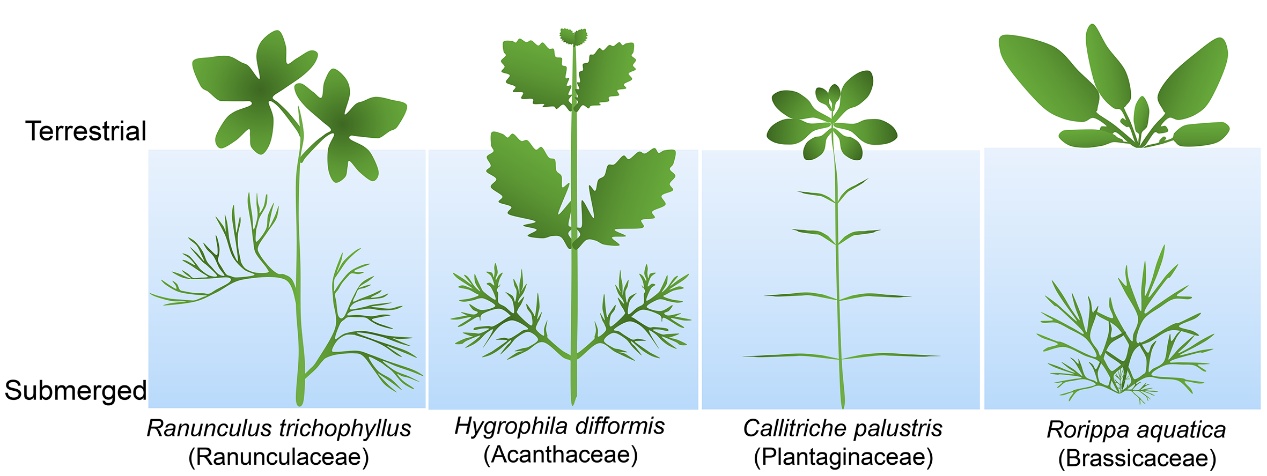
The frequency and severity of floods have sharply increased with the acceleration of global climate change. To adapt to flooded environments, plants have evolved a series of adaptive phenotypes, including aerenchyma and adventitious roots, enlarged stomata, internode and petiole elongation, and inhibition of high-energy metabolism processes.
Recently, a research group led by Prof. HOU Hongwei from the Institute of Hydrobiology (IHB) of the Chinese Academy of Sciences clarified three key adaptive strategies that plants use to endure water stress, and highlighted heterophylly as a distinct strategy for plant flood adaptation. The study was published in Plant, Cell & Environment.
The researchers elaborated on two types of adaptive strategies adopted by model plants including rice and watercress in response to waterlogging stress.
One strategy is the low oxygen quiescence strategy (LOQS). It is characterized by the inhibition of plant metabolism and growth during waterlogging, and the ability to quickly restore growth after the flood subsides. It is more common in species that can tolerate short-term deep floods.
The other one is the low oxygen escape strategy (LOES). It is characterized by the rapid elongation of stems or leaves in a short period of time, exposing the surface of shallow floods to achieve gas exchange and photosynthesis.
The researchers also defined "heterophylly" in aquatic plants as the third adaptation strategy. Unlike LOQS and LOES, heterophyllous plants develop the “variation” strategy: They can produce aquatic leaves when the water level rises and terrestrial leaves when the water level drops.
Moreover, the researchers discussed the molecular mechanisms and omics advances of heterophylly regulation, and pointed out heterophylly's limitations and research directions. They also introduced the photosynthetic plasticity strategies of aquatic plants in different environments and the developmental plasticity strategies during floating growth.
This study proposes applying the diverse adaptation strategies of aquatic plants to future crop improvement and agricultural production, with strategies including horizontal gene transfer and specific expression of heterophylly regulatory genes.

The morphology of four typical heterophyllous plants (Image by IHB)

86-10-68597521 (day)
86-10-68597289 (night)

52 Sanlihe Rd., Xicheng District,
Beijing, China (100864)

